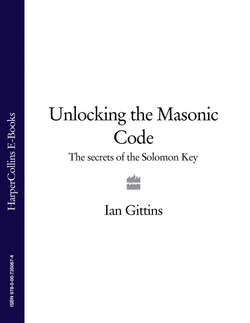Читать книгу Unlocking the Masonic Code: The Secrets of the Solomon Key - Ian Gittins - Страница 14
Medieval Masons
ОглавлениеTwo thousand years after King David supposedly asked God for permission to build a temple in Jerusalem, spectacular houses of worship were springing up right across western Europe. The Roman Catholic Church was at the peak of its dominance and empire-building, and a succession of popes ordered the building of a series of magnificent cathedrals to inspire awe and devotion in all who set eyes upon them—and, as a consequence, to cement the Church’s own seemingly impregnable control over society.
The end of the eleventh century thus marked the arrival of Gothic architecture, the style whose majesty and opulence was intended to reflect the splendour and glory of an omnipotent God. This ornate school of architecture was first glimpsed in England and northern France, but by the middle of the twelfth century had spread through Germany and the Low Countries and as far south as Italy and Spain.
The Gothic style emphasized huge, towering vertical stone edifices that held enormous painted glass windows with ribbed vaults and pointed arches—the classic look of the medieval cathedral. These houses of worship were frequently decorated with statues on the outside, while the elaborate windows re-enacted Biblical stories—visual aids that were highly useful given that the vast majority of the congregation in those days would have been completely illiterate.
The stunning architecture of these portentous structures mirrored exactly the theological messages spreading from Rome. God—and his representatives on earth, the Catholic Church—were all-powerful and almighty. The sky-scraping Gothic cathedrals were his power made concrete: the sole response demanded of the ordinary man was unquestioning supplication. The floor plan of these temples of worship invariably spelt out a cross.
It is perhaps unsurprising that these towering edifices seemed like living miracles to the uneducated serfs and labourers of medieval England. It was certainly difficult to comprehend how the slender columns that rose from the floor of the building could support the neck-craning ceilings and heavy ornamentation. The overwhelmed worshipper could be forgiven for assuming that only divine intervention held the whole structure in place.
The truth was a little more prosaic: Gothic cathedrals benefited from the design feature known as the flying buttress, a projecting structure that was built on the outside of the building to counter the gravitational thrust of the roof. These external supports removed the need for bulky stone pillars inside the church and facilitated the vast and resplendent stainedglass windows.
Just as these cloud-bursting wonders of medieval engineering seemed divinely inspired, so the men who designed and crafted them were regarded as miracle workers. The handful of Master Masons possessed of the skill in geometry, mathematics and physics to oversee such constructions were held in veneration by kings, church leaders and the hoi-polloi alike. Few posts outside of the royal court held greater social cachet, or were more widely coveted.
Initially Masons came under the theoretical control of the Masons’ Livery Company, a regulatory body established in 1220 that sought to establish maximum fees, working conditions and guarantees of Godly behaviour upon Master Masons. Understandably profoundly unimpressed at these attempts to fix a low ceiling on their large earning potential, Masons reacted
